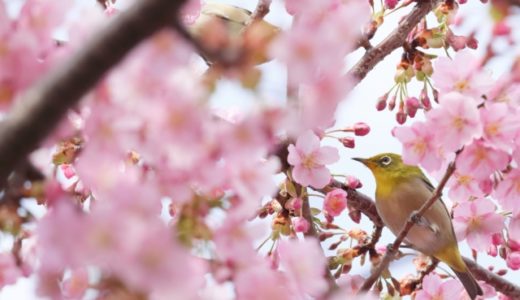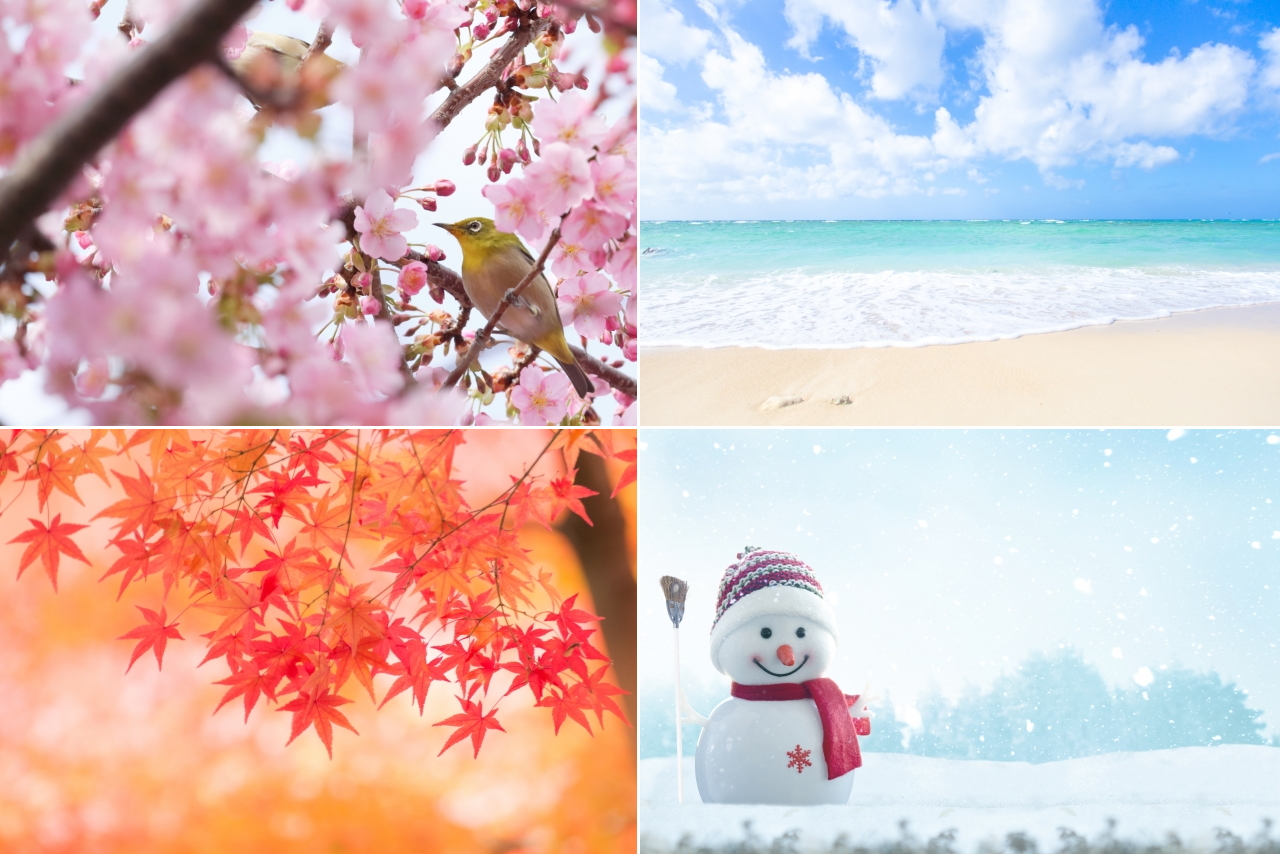Japan has four seasons; spring, summer, autumn and winter. Each has its unique characteristics, and we have valued them and have enjoyed them.
Of course, we change a kimono in accordance with the season.
This time I would like to write about kimono and seasons.
Seasons are divided clearly, and each has its own characteristics.
In Japan, we have a word “shiki”, “shi” means four and “ki” means seasons, in this way, we recognize each season clearly and we’ve lived enjoying them.
Spring: from March to May

In spring, cherry blossoms bloom throughout Japan.
From end of winter, TV reporters start to report when the cherry blossoms come into the bloom, and we will see the cherry blossoms and feel spring. We have a word “hanami”, that is one kinds of a picnic to see the cherry blossoms eating and drinking with the family, friends and co-workers.
In fact, the cherry blossoms are in full bloom for only 1-2 weeks and due to the wind and the rain, it’s easy to fall.
So, everyone checks the TV reports of their condition and chooses the best date, and then we go to see them.
As I’ve written, the cherry blossoms are one of the symbols of spring, so many kimono for wearing during this season, are decorated with this flower.
Of course, in this season many other flowers also bloom, so there is more kimono with drawings of flowers than other seasons. For example, flowers of plums, peonies and wisterias.
These spring flowers are usually painted with soft colors, such as pale pink and pale yellow, because the light of this season is soft. And, we’re more excited this warm season than cold winter season, so the colors and the patterns used in kimono are also bright colors.
Summer: from June to August

In Japan, this season starts with the long rainy season; called “tsuyu”, and after that, hot days start.
One of the representative flowers of Japanese summer is hydrangea, and its patterns are popular with many people.
This is a common pattern, as someone says, “if you can’t decide a pattern in summer, just choose a pattern of hydrangea”.
Also, morning glories that most of all Japanese children raise at elementary school, are also popular.
This flower is often painted in “yukata” too, which is another category of kimono.
By the way, there is one thing that I find interesting in summer kimono; in spite of hot season, there are many kimono in black.
But there is a reason. Wearing a thin black kimono with a white “juban”, which is another kimono wearing under kimono, is fashionable. Especially high-grade kimono for summer is very thin, so you can enjoy this technique.
I think it’s so interesting.
Autumn: from September to November

During this season, the leaves begin to turn red, yellow, orange and brown.
Though, recently summer season is longer than before and autumn comes later.
So, in this season, autumn leaves, such as maple and ginkgo, are often painted on kimono.
And autumn is a harvest season and good for enjoying food, so as a representative fruit, grapes are sometimes drawn.
There is a classic combination called “budou-risu-mon”, which combines grape and squirrel. “Budou” means grape, “risu” means squirrel, and “mon” means pattern.
Winter: from December to February

This season is very cold weather, and many areas are covered with snow.
Seasonally it is a pure white landscape, but at the end of the year there are many events such as year-end parties, called “bounenkai” to thank each other for our efforts of the year, and Christmas, and after that, it’s time to celebrate the new year. So, this season is also that everyone wants gorgeousness.
In Japan, there is a pattern called “Sho-chiku-bai” which is a fortune pattern.
So, many kimono is decorated with them.
“Sho” means pine, “chiku” means bamboo, and “bai” means plum.
And, other plants called “nanten” is sonically said to “difficulties turn to happiness”, so we prefer to use them in time to celebrate.
Hot summer and cold winter.
Both are severe seasons, but Japanese have enjoyed them with kimono.
I think it may be a strength of Japan.
I wish you’ll see and enjoy various patterns and colors of kimono.

